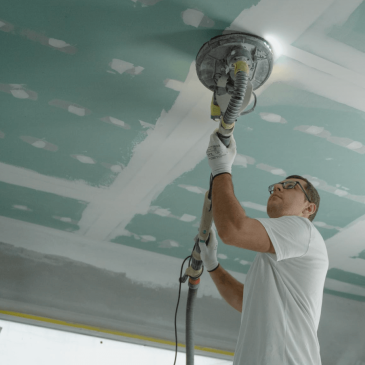What Loan Is Best for Home Remodels?
Many homeowners who have either lived in their home for a long while or who have seen an increase in market value on their property choose to tap into their home equity for the purposes of doing remodeling projects. More often than not, homeowners don’t find themselves in a position to shell out cash without leveraging this asset. With refinance rates looking better than ever, using one’s existing mortgage is a popular way to access funds to start breaking ground on projects around the home.
Thinking about remodeling your home sometime in the next year? Have equity built up in your property? If this sounds like you, then read on to learn about a few loan types that will put you in good standing to finance those long-awaited home improvement projects.
Taking Cash-Out of Your Mortgage Through a Refinance
When homeowners refinance an existing mortgage at a higher amount than the original mortgage, it’s called a cash-out mortgage refinance. With this type of loan, the homeowner gets the cash in hand as part of the new mortgage, and can then use it to finance home renovations.
Cash-out refinancing uses one’s home as the loan collateral. Often, lenders require 20% of the full loan amount down, together with a minimum credit score. The homeowner may be limited in terms of how much can be refinanced. This will be based on certain factors, including the amount of equity currently in the home. As a result, the more equity, the larger the loan.
Home Equity Loans vs. HELOCs
Home equity loans are basically another version of taking a second mortgage out on the home. Homeowners maintain the original mortgage payment, and agree to take on a second mortgage payment for the home equity loan. Again, homeowners will find certain limits on the loan amount based on the equity built up in the home.
Home equity loans are different from home equity lines of credit (HELOC) — the former is a single-use loan with a fixed monthly payment. HELOCs, however, are technically revolving lines of credit that can be borrowed against as the homeowner pays them off.
With each of these loans, the home represents the loan collateral and 20% is required as a down. These loans will often have lighter credit requirements, too.
Fannie Mae HomeStyle Loan
A Fannie Mae HomeStyle loan is often used for home renovations. The loan’s flexible lending requirements make it attractive for these purposes – these loans only require 5% of the loan amount down, and are less strict on the minimum credit score. Here, the homeowner will be required to get a cost estimate and a detailed explanation from a certified contractor of the work that they plan to do.
Technically, a Fannie Mae HomeStyle loan replaces one’s current loan. This means that the homeowner only makes a single monthly payment. The loan lowers closing costs and reduces paperwork. In contrast to home equity loans or a cash-out refinancing, the funds for renovations are placed into escrow; from here, payments are made directly to he contractors, and no direct access is given to the homeowners.
FHA 203(k) loans
The Federal Housing Administration also has what’s known as a 203(k) loan for financing various kinds of renovations, from small-scale to large. The requirements here are also lighter, including just 3.5% down. As a result, this is one of the easier loans to get your hands on for financing remodeling projects.
Available in standard and limited types, each has its own options. The limited version does not require homeowners to hire a consultant; this loan can be used exclusively for minor upgrades and it’s capped at $35,000. The standard version can be used for extensive projects that are much larger in scale. This loan type requires homeowners to hire a 203(k)-qualified consultant to oversee the project the whole way through to completion. The standard loan is for renovations that cost more than $35,000. The FHA has a comprehensive list available of eligible projects, when you’re ready to begin your research.



